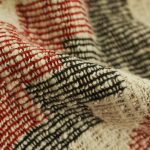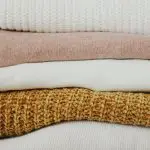When you're gearing up for extreme sports, the choice of fabric can make a significant difference in your performance and safety. Performance fabrics like polyester, nylon, and merino wool aren't just buzzwords; they offer durability, flexibility, and moisture-wicking properties essential for high-intensity activities. These materials allow your skin to breathe and your muscles to move freely, enhancing your overall experience. But have you ever wondered what goes into making these fabrics so effective? Understanding the technology behind these fabrics could change how you approach your next adventure.
Table of Contents
Key Takeaways
- Performance fabrics enhance extreme sports experiences by providing durability, flexibility, and moisture-wicking properties.
- Polyester and nylon offer exceptional durability and breathability, ideal for extreme sports gear.
- Spandex and Lycra ensure a snug yet flexible fit, allowing unrestricted movement during intense activities.
- Advanced fabric technologies, such as micro-ventilation and chemical treatments, enhance moisture management and water repellency.
- Future trends include eco-friendly, high-performance fabrics made from recycled materials and smart fabrics with performance-tracking sensors.
Benefits of Performance Fabrics
Performance fabrics offer numerous advantages that can enhance your extreme sports experience. When you're pushing your limits, you need gear that can keep up. One of the key benefits of performance fabrics is their durability. These materials are designed to withstand the rigors of intense activity, ensuring that your gear won't wear out prematurely. You're investing in equipment that can handle the demands of your sport, giving you confidence in every move you make.
Comfort is another essential advantage. Performance fabrics are engineered to provide a snug yet flexible fit, allowing for a full range of motion. This means you can focus on your performance without being distracted by uncomfortable gear. Additionally, these fabrics excel in moisture wicking, drawing sweat away from your skin to keep you dry. This feature is crucial for maintaining comfort during high-intensity activities.
Breathability is equally significant. Performance fabrics are designed to allow air to circulate, preventing overheating and ensuring you stay cool even during the most strenuous exertions. By incorporating these fabrics into your gear, you optimize both your comfort and performance, giving you the edge needed to excel in extreme sports.
Types of Performance Fabrics
When it comes to choosing the right gear, understanding the different types of performance fabrics can make all the difference in your extreme sports experience.
First up, you've got polyester, a powerhouse in fabric construction due to its exceptional durability and resistance to stretching and shrinking. It's a top choice for moisture-wicking, ensuring you stay dry even during the most intense activities.
Next, consider nylon. Known for its impressive strength-to-weight ratio, nylon offers superb durability and elasticity. Its breathability makes it perfect for gear that needs to perform under pressure, keeping you comfortable while allowing for ideal airflow.
Merino wool might surprise you as a performance fabric, but its natural moisture-wicking properties and breathability are hard to beat. It regulates temperature effectively, keeping you warm in the cold and cool in the heat, making it versatile for various extreme sports environments.
Lastly, let's not overlook spandex. While often blended with other fibers, its stretchability adds flexibility to your gear, enhancing comfort and movement. When you select fabrics with the right combination of moisture-wicking, breathability, and durability, you're setting yourself up for a superior extreme sports experience.
Technology Behind Fabrics
Delving into the technology behind fabrics reveals the sophisticated methods that make your extreme sports gear both functional and comfortable. Fabric construction is fundamental to this process. Engineers meticulously select fibers and weave patterns to create textiles that can endure the rigors of extreme sports. Whether it's ripstop nylon for durability or polyester blends for flexibility, each choice is a calculated decision aimed at optimizing performance.
Moisture management is another critical aspect. Advanced fabrics incorporate hydrophobic and hydrophilic fibers to wick sweat away from your skin. This keeps you dry and reduces the risk of chafing and discomfort. Some materials even feature micro-ventilation holes that enhance breathability, ensuring that your body heat is efficiently dissipated during intense activity.
Additionally, many performance fabrics undergo chemical treatments to repel water and resist stains, further enhancing their utility. These treatments don't compromise the fabric's breathability, striking a perfect balance between protection and comfort.
Whether you're scaling a mountain or maneuvering a rapid, the technology integrated into your gear's fabric guarantees you stay focused on the challenge at hand, not on your clothing. This meticulous attention to fabric construction and moisture management sets the foundation for top-tier extreme sports apparel.
Choosing the Right Fabric
Understanding the technology behind fabrics is just the first step; now, let's explore how to select the right fabric for your extreme sports gear.
When you're selecting fabric, prioritize fabric durability. For extreme sports, your gear must withstand harsh conditions, from rugged terrains to abrasive surfaces. Durable fabrics like ripstop nylon and Cordura offer exceptional resistance to tears and abrasions, guaranteeing your gear lasts longer and performs better.
Next, consider moisture wicking properties. Engaging in high-intensity sports will make you sweat, and the last thing you need is to feel drenched and uncomfortable. Fabrics with moisture-wicking capabilities, such as polyester blends or merino wool, pull sweat away from your skin and promote quick evaporation. This keeps you dry and comfortable, allowing you to focus on your performance rather than your gear.
Don't overlook the fabric's flexibility and weight. Lightweight materials like spandex or Lycra provide excellent stretch and freedom of movement, which are essential for activities requiring agility and precision.
Future Trends in Fabrics
Advancements in textile technology are revolutionizing the way we think about fabrics for extreme sports gear. If you're seeking the pinnacle of performance and sustainability, you'll be thrilled to know that future trends are focusing heavily on eco-friendly options.
Imagine gear made from recycled materials that doesn't compromise on durability or functionality. These innovations not only reduce your carbon footprint but also enhance your sporting experience by offering high-performance features like moisture-wicking and thermal regulation.
Customization options are another game-changer. No longer are athletes confined to off-the-rack solutions. Imagine fabrics tailored to your specific needs, whether that's extra padding for high-impact sports or added breathability for endurance activities.
With advancements in 3D knitting and printing technologies, you can have gear that's truly one-of-a-kind, optimized for your unique performance requirements.
Moreover, smart fabrics equipped with sensors to monitor your essential signs and performance metrics are becoming increasingly accessible. This data can offer invaluable insights into your training regimen, helping you fine-tune every aspect of your performance.
Frequently Asked Questions
How Should Performance Fabrics Be Cared for and Maintained?
To care for performance fabrics, follow specific washing instructions and use gentle cycles. For storage tips, keep them in cool, dry places. Master repair techniques for tears, and apply effective stain removal methods promptly to maintain quality.
Are Performance Fabrics Environmentally Friendly and Sustainable?
Yes, performance fabrics can be eco-friendly and sustainable. You should look for brands that prioritize eco-friendly options and sustainable practices, like using recycled materials and reducing water usage, ensuring both high performance and minimal environmental impact.
Can Performance Fabrics Be Customized for Specific Sports?
Yes, you can customize performance fabrics for specific sports. Innovative technologies allow you to tailor material properties to meet specific needs, ensuring excellent performance. Customization options are vast, making it easy to achieve sport-specific enhancements.
What Are the Cost Differences Between Performance Fabrics and Regular Fabrics?
Think of performance fabrics as the sword to your shield. When you do a cost comparison, you'll find higher prices, but the quality benefits like durability and versatility often outweigh those of regular fabrics.
Do Performance Fabrics Cause Skin Irritation or Allergies?
Yes, performance fabrics can cause skin reactions and irritation in some individuals with fabric sensitivities. If you have allergies, it's important to test new fabrics beforehand to avoid any potential skin irritation or discomfort.
- How Does Ring Spun Cotton Affect Garment Fit and Shape Retention? - August 13, 2024
- What Are the Challenges in Producing Ring Spun Cotton? - August 13, 2024
- Is Ring Spun Cotton Suitable for Plus-Size Clothing? - August 13, 2024






